Work is now underway fitting out HMS Cardiff as she joins sister Type 26 Frigate HMS Glasgow in drydock at the BAE Systems Maritime yard in Scotstoun, Glasgow.
Both vessels were built at Govan, just upriver from here.
HMS Cardiff (F89) and HMS Glasgow (F88) Type 26 City-class frigates on Glasgow’s historical shipbuilding River Clyde both now at the BAE Systems Scotstoun Yard #Scotland #Shipbuilding #clydebuilt #Glasgow #HMSCardiff #HMSGlasgow #BAE #Royalnavy #frigates pic.twitter.com/y9Fi1Vc4e6
— Màde ïn Scotlànd (@EyeintheskyGla) September 9, 2024
Images via John S B Crawford 📸
“Seeing the latest ship in the water for the first time is a proud and exciting moment for the thousands of people involved in this great national endeavour,” said David Shepherd, Type 26 Programme Director for BAE Systems, regarding HMS Cardiff recently.
“The Type 26 has awesome and world-leading capability and we’re looking forward to installing HMS Cardiff’s complex systems and bringing her to life.”
With Cardiff gone, attention at Govan now focuses on Type 26s No.3 (Belfast) and No.4 (Birmingham), plus No.5 (Sheffield) which will be laid down later this autumn.
They will all be constructed indoors – Glasgow and Cardiff spent many months on the hardstanding at Govan, exposed to the Scottish weather – in the new Janet Harvey hall, a gigantic assembly shed which will be completed next year, where two Type 26s can be put together side-by-side. Between 2028 and the mid-2030s the eight City-class frigates will replace the ageing Type 23 frigates which currently perform vital anti-submarine patrols to safeguard UK waters and interests from underwater threats.
The vast new hall is part of a £300 million transformation project aimed at revolutionising shipbuilding on the River Clyde.
Janet Harvey joined the River Clyde shipyards as an electrician in 1940 at the age of 18, becoming one of the few women working in the predominantly male industry during the war. Her significant contributions were recognised when she was awarded an Honorary Degree of Doctor of Engineering by Glasgow Caledonian University at the age of 96. Harvey passed away on Armistice Day in 2023, aged 101.
Jen Blee, Business Operations Director of BAE Systems’ Naval Ships business, commented, “It’s fitting that a pioneer such as Janet will remain synonymous with our efforts to re-imagine complex shipbuilding on the upper Clyde. Today, women like Janet are much more commonplace in our yards than they once were, and their numbers and impact continue to grow.”
Janet Harvey is shown below.
Janet’s niece, June Cofflet, expressed the family’s pride, saying, “Janet would have been absolutely delighted to have the ship build hall named after her. She was so very proud of the work she did during the war. As a family, we are delighted that BAE Systems has chosen our aunt’s name to go on the ship build hall; it is a real honour.”
The facility is a key part of BAE Systems’ plan to enhance shipbuilding capabilities in Glasgow. The hall will be large enough to construct two Type 26 frigates side-by-side, using over 6,000 tonnes of steel and 20,000 cubic metres of concrete. Designed to accommodate up to 500 workers per shift, the hall will feature two 100-tonne cranes and two 20-tonne cranes, enabling efficient and safe shipbuilding regardless of weather conditions.
The Type 26 frigate is an advanced Anti-Submarine Warfare warship, designed for a range of operations including counter-piracy and humanitarian missions. Construction of the first four ships is already underway, with HMS Glasgow, HMS Cardiff, HMS Belfast, and HMS Birmingham at various stages of completion. The project is expected to sustain approximately 1,700 jobs in Scotland and an additional 2,300 jobs across the wider UK supply chain.
The image below shows how it will look.

The Type 26 frigates are designed for anti-submarine warfare, high-intensity air defence, and can be adapted for roles such as humanitarian aid and medical support. The new facility will ensure that these ships are built efficiently and to the highest standards, and a bit quicker too.
The investment in the new shipbuilding hall is expected to sustain approximately 1,700 jobs in Scotland and 2,300 jobs across the wider UK supply chain, contributing to both the local and national economy.


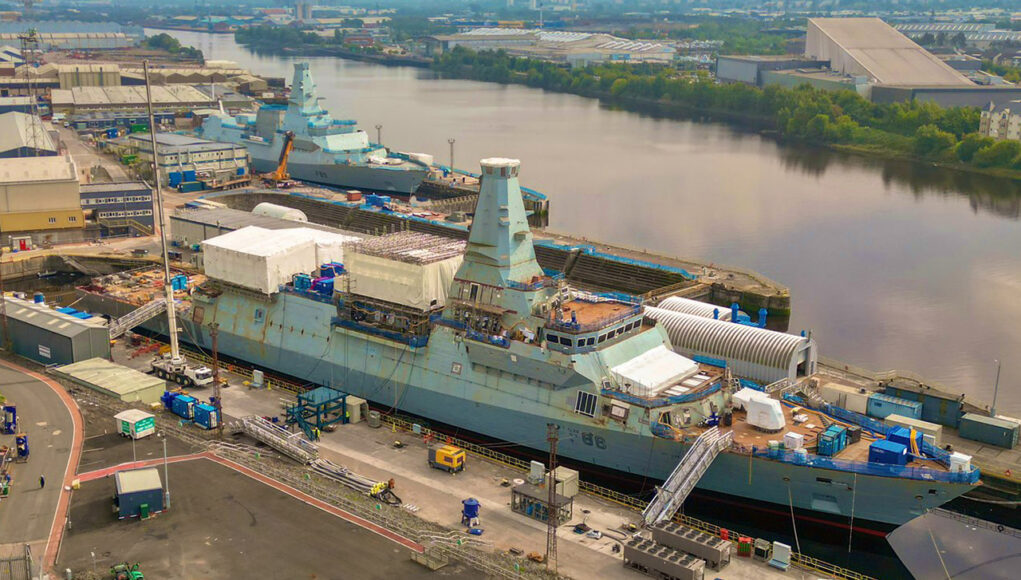
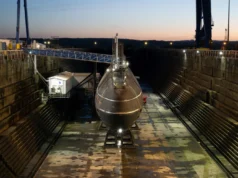
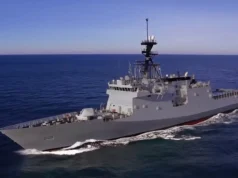
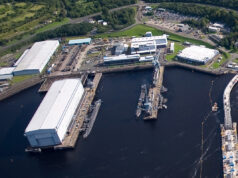

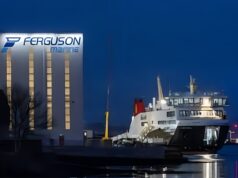
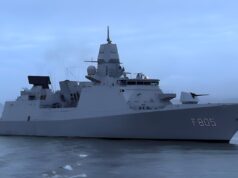

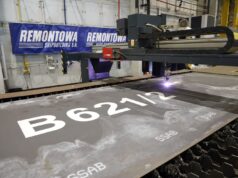
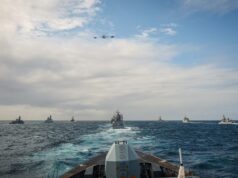


From the picture it looks like very little has been done on hms Glasgow since launch.
The main work is internal….she’s being fitted out with systems and being tested.
Just woke up after the usual long wasted weekend? What gems of absolute crap are you proposing to post today
There he is , David Lloyd, UKDJ favourite idiot.
I’m not sure I have ever actually seen you make a single worth while comment on this sight.
Do you actually know anything about UK defence? clearly you have never served or been in industry like most on here that have something useful to say.
16 hours of silence, must have done something right 😀
Jim looks are deceptive and my perspective is different to yours, just remember that until about the last 4/6 months of outfitting that’s how a modern block build usually looks.
When they are launched they have all the heavy machinery fitted such as the GT, DG, gearboxes, motors etc during the block builds and those are locked out pre joining.
If you look very carefully at the photos of Glasgow at launch, you will notice she hasn’t her rudders, shafting, bow bulb etc etc etc fitted.
Then it’s down to Scotstoun for outfitting, which is way more tricky.
All of the equipment is connected up, outfitted and 000’s of miles of cabling, pipework and equipment fitted and it’s all done in a pre determined way.
And that hasn’t been done for a major surface ship any where in the U.K. since 2010, so they are out of practice.
Why is my perspective different to yours ?
You will note that Cardiff is now Dock 2 which Glasgow was previously occupying, both docks are similar sizes but Dock 2 has pits in the Dock floor to allow the fitting of the bow bulb, sonar rudders, shafts and propellers. That doesn’t mean nothing else is going on inside at the same time.
The very fact they have shifted her over to Dock 3 means all that work is in situ so yes a lot has been done. The other external give away of progress is that the gun mount is in place and you don’t fit that until everything below it is in situ and usually it’s one of the last bits fitted.
As for the rest most of more visible external fittings aren’t fitted till pretty late on.
Have you ever seen a ship or submarine being built yourself, if not I assure you it’s the ultimate Duck impression, nothing much visible till it all takes off.
I said on another article that I had a sneaky feeling that based on what I was seeing she is nearer to finishing outfitting than some doom sayers think.
If you look at the timeline on Naval Lookout she is due to start Test and commissioning of equipment very early next year and builders Sea trials end of Q3 next year.
OK, time for an uninformed question from the gallery:
Would there be any net benefits derived from construction of covered/conditioned docks at Scotstoun capable of accommodating T-26 and feasible successor classes (e.g., OPV/Corvettes, T-83, etc.)? Benefits of build quality and reduced construction time? Initial investment cost infeasible? Simply curious…🤔
Ever tried working outside in Scotland 😀
They will loose a lot of days outside working due to bad weather, that’s not such a big problem once the outer hull is finished but much bigger issue when laying the initial keel.
Also the new building will have gantry cranes making lifts more seamless and also reducing lost time due to high winds.
I’m guessing it will also help with worker retention. Most ship workers are older and no one wants to be outside next to the Clyde welding in February.
Laying the initial keel ? Jim that hasn’t been done outside in U.K. this century. 😂
In fact nowadays it is only a figure of speech, which usually means the first pieces of steel have been assembled in the SBOH.
Oh and FYI BAe isn’t Fergusons, due to the downsizing of manpower post T45 and QE the age demographic of the workforce has reduced pretty dramatically.
It is always better to work under cover especially during the block assembly, and block joining up, which is now going to be all snugly done in the Janet Harvey SB hall.
The savings in time, cost and easier QC out weigh the cost of the new facility, same applies to the new highly automated steel fabrication line.
Outfitting is bit more ambiguous as 90% is either inside or under the hull, so already sheltered. The last stages of the outfit are outside but I don’t think the benefits would be worth the costs involved (you need a very tall shed to mount a radar in).
Thanks for insight, I’m crossing my fingers the build program accelerates as planned. However we have had so many disappointments of late with manufacturing that’s it’s easy to believe massive delays are possible if not probable without us knowing until the last minute.
Daft as it may sound most of U.K. engineering PLC is pretty good at what we do and can build just as quickly as others. Unfortunately HMG doesn’t fund that, it likes to space the money out for as long as possible.
Which overall costs far per ship.
If Bae says they can do it in 60 months then I don’t doubt they can, and if HMG funds it then that is exactly what they will do.
Disappointing to see how much rust is appearing on Glasgow already.
I thought modern paint would last a bit longer than 2 years.
Probably weld spatter that is rusting and or the scaffold tubes.
If you look at the rust streaks they run locally.
The advantage of working totally indoors is the you don’t put the top coats on until further in the process.
I thought that, but then I thought that majority was in places that there are temporary ( scaffolding ?) structures and works above , so assumed they were rust run off from the scaffolding , etc, above.
They mainly look like streaks of surface rust coloured staining from something above.
It might be rust from the deck floor washed over by hose pipes/rain.
Most vessels are have surface rust during construction, it is normal. Don’t worry it is sanded down before painting with at least couple of coats.
Even under cover in a construction hall there is moisture from condensation. Building beside the sea or river means it cannot be avoided.
When the ships are launched they will be nice and sparkly.
Doesn’t look like the final paint finish has been applied yet.
Did they ever release who cut the wires and the motivation?
It looks to me thar they are going to have mushroom farms for the Sea Ceptor. I was hoping they might have changed to ExLS quad pack launchers.
Time flies does it not, soon HMS Glasgow will be on sea trials , then i presume work up .war games to test the crew. then into service, a great weekend for military enthusiasts so see these great ships in person. I bet you guys cant wait for the finished ship to finally sail, thanks royal navy ..
just a thought…
I think the 26 has beautiful lines, she’s striking to look at and I can’t wait to visit Portsmouth and see her alongside. Wish they didn’t cost so much, a fleet of 13 would have been great with the additional 31’s filling in where tasks were appropriate for a smaller vessel. Armament wise, does anyone know if there are plans for the DragonFire laser system to be incorporated down the line, how many and where they might be mounted? The issue of spending millions on a handful of missiles to knock down 10k incoming drones surely is at forefront for development of all new combat vessels.
If Dragonfire makes it into service the T45’s and their successors will get them first – T26 maybe somewhere down the line too.
The T26 will be at Devonport replacing the ASW 23s.
T31 is unconfirmed but probably Portsmouth as that is where the GP 23s are based